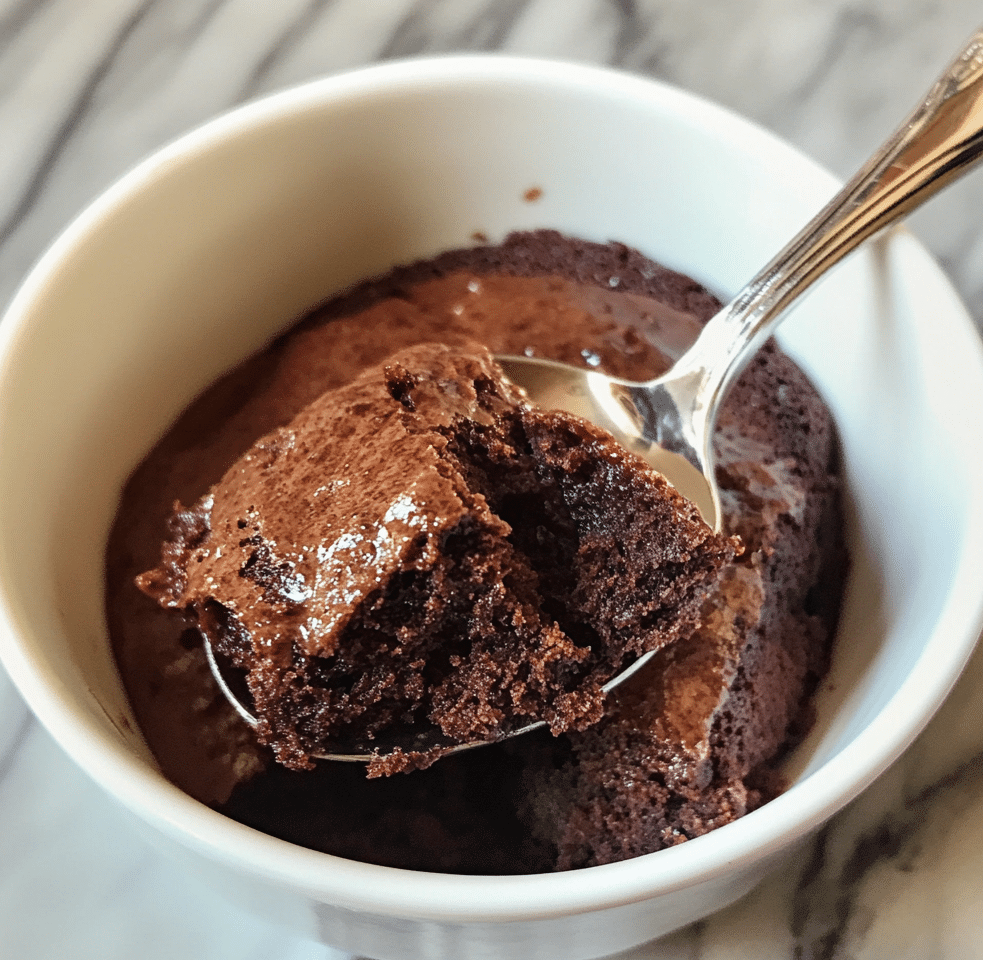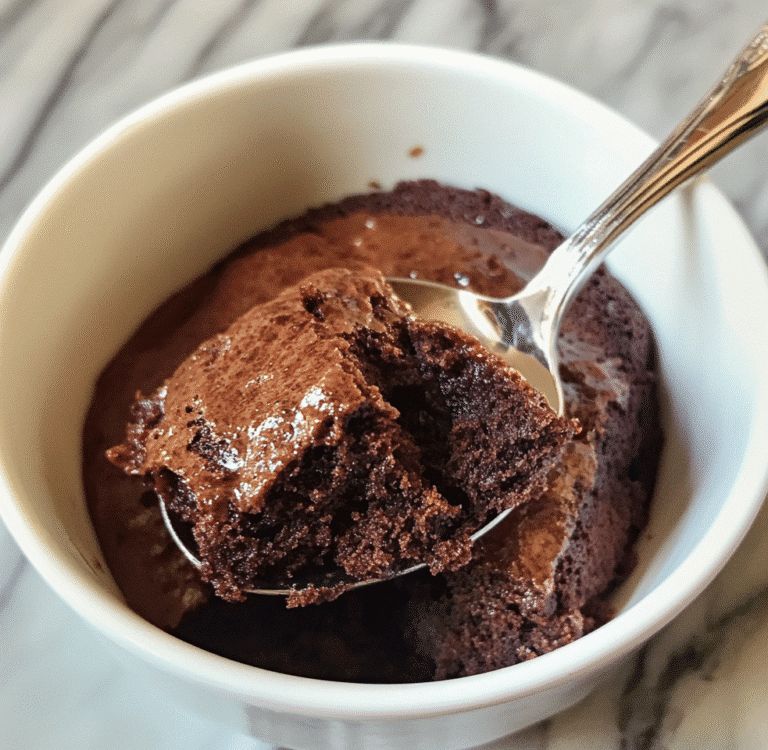A protein mug cake offers a game-changing twist on dessert—it’s quick, single-serve, and packed with protein. In under two minutes, you can satisfy a sweet tooth or refuel after a workout without fuss or cleanup. I’ve honed this little marvel over years, and in Part 1, I’ll share the story of how a cozy kitchen moment turned into my go-to healthy indulgence. Stick around to learn why this protein-packed cake beats boxed snacks, how easy it is to customize, and how it reflects my journey from professional chef to kitchen innovator.
PrintThe Story Behind My Protein Mug Cake Journey
How I discovered the magic of protein mug cake
I first stumbled on the protein mug cake during my Culinary Institute of America days, tinkering with protein powder in dessert recipes. I found myself craving something sweet after long kitchen shifts but didn’t want to resort to processed snacks. One night, inspired by my grandmother’s classic cake recipe, I dumped ingredients into a mug, microwaved it, and tasted something comforting yet functional. That first warm bite—moist, chocolatey, and packed with 25 g of protein—felt like a nostalgic hug with a modern twist.
Why protein mug cake is my go-to snack now
Fast forward to running restaurants and even a taco truck (yes, until it caught fire!), I often relied on this cake for a quick refuel between service. The protein mug cake combines convenience, nutrition, and flavor in one simple recipe. It hits the spot after workouts, during busy prep hours, or even as a late-night treat. I even link it in my post-workout snack roundup for readers looking for smart energy boosts. Its versatility makes it perfect for busy cooks, gym-goers, or anyone needing a fast, wholesome dessert fix.
Essential Ingredients for a Great Protein Mug Cake
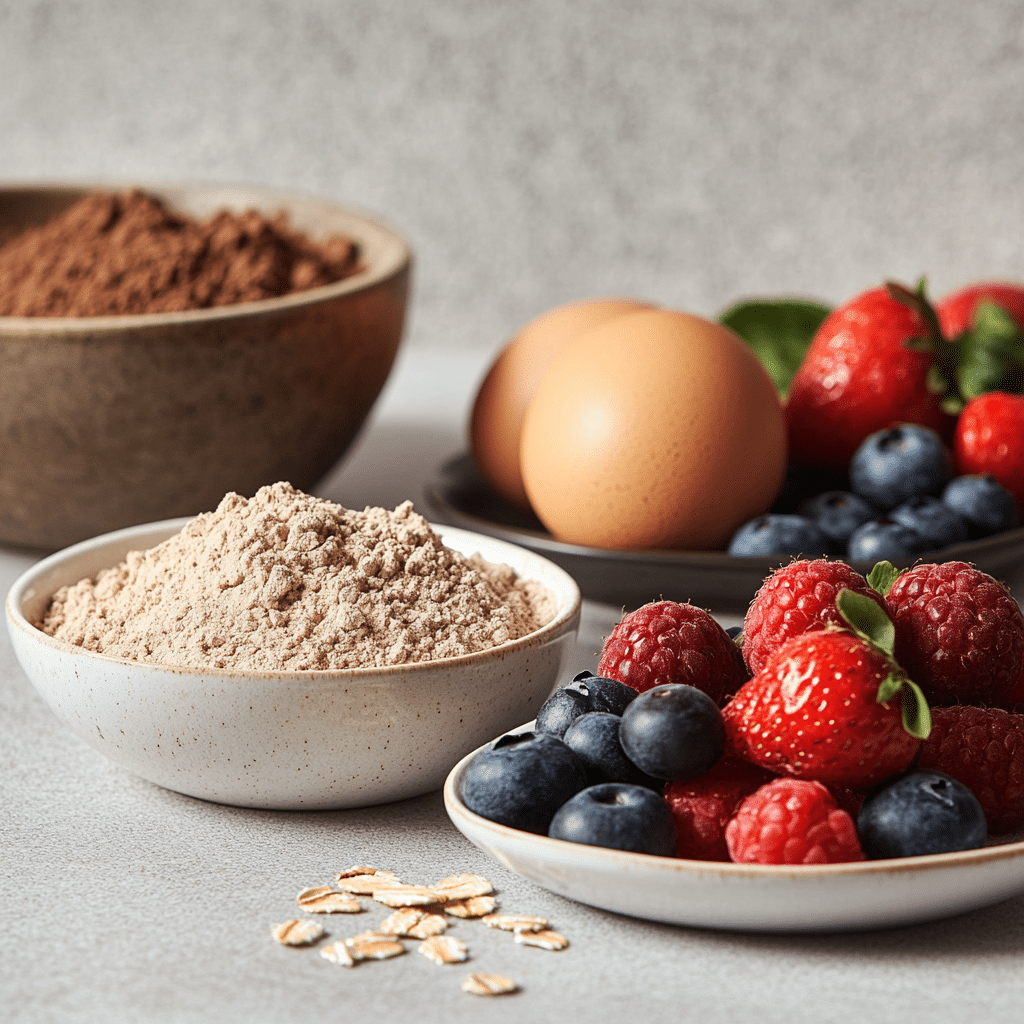
Must-Have Ingredients: Protein Powder, Binder, Leavening
Creating a satisfying and fluffy protein mug cake starts with choosing the right base ingredients. At its core, this cake needs protein, a binder, and something to help it rise.
Protein Powder
This is the foundation of your mug cake. A single scoop typically delivers between 15 to 25 grams of protein. Whey protein is the most common and gives a soft, slightly chewy texture. Casein protein absorbs more liquid and yields a denser, more pudding-like cake. Plant-based options, like pea or brown rice protein, are ideal for dairy-free or vegan versions, although they can sometimes lead to a slightly grainier texture. Choose based on your dietary needs and the consistency you prefer.
Binder
Without a proper binder, your mug cake will crumble apart or become dry. An egg works wonderfully here, keeping the structure firm but moist. For those avoiding eggs, a flax-egg (made by mixing one tablespoon of ground flaxseed with three tablespoons of water) does the job with a subtle nutty taste. Greek yogurt can also act as a secondary binder and adds richness while boosting the protein content even more.
Leavening Agent
Baking powder is your secret weapon for achieving a soft, cake-like rise. Just ½ teaspoon is enough to add volume and prevent your cake from becoming dense or rubbery. Avoid using baking soda unless your mix has an acid like yogurt or lemon juice to activate it.
These three elements—protein, binder, and leavening—form the backbone of a solid protein mug cake. From there, the real fun begins with your add-ins.
Optional Add-Ins: Flours, Cocoa, Sweeteners, Mix-Ins
This is where you can take a simple protein cake and elevate it into something you’ll crave regularly.
Flour for Structure and Texture
Adding one or two tablespoons of oat flour or coconut flour can help thicken the batter and provide a heartier texture. Oat flour creates a mild, wholesome flavor and helps keep the cake moist. Coconut flour is more absorbent and can lead to a drier result if not balanced with extra liquid, but it offers a slightly sweet, tropical note. Almond flour works well too, lending a rich, nutty body to the cake.
Cocoa Powder for Chocolate Lovers
A tablespoon of unsweetened cocoa powder transforms your mug cake into a guilt-free brownie. For deeper flavor, try using dark cocoa powder. Not a chocolate fan? Other flavor enhancers like cinnamon, pumpkin spice, instant espresso powder, or matcha can give your cake character without added calories.
Natural Sweeteners
Sweetness is essential in a dessert, even a healthy one. Stick to 1 tablespoon of natural options like maple syrup, honey, or coconut sugar. These bring sweetness without the crash that often follows refined sugars. If you’re cutting carbs or sugar, you can use stevia, erythritol, or monk fruit sweetener, but test the amount—some are much sweeter than sugar.
Flavorful Mix-Ins
Here’s where you get personal. Fold in dark chocolate chips for richness, chopped nuts for crunch, or frozen berries for a juicy burst of flavor. Even a spoonful of nut butter in the center can create a gooey core that tastes indulgent without being excessive. Shredded coconut, orange zest, or dried fruit also work well, depending on your preferences.
Milk for Moisture
Don’t forget your liquid base. Two to three tablespoons of milk—dairy or plant-based—brings the batter together and impacts texture. Almond milk is light, soy milk is creamier and higher in protein, while oat milk adds a subtle sweetness and blends beautifully with cocoa or cinnamon flavors.
The best part about a protein mug cake is how forgiving it is. You can adjust these ingredients based on what you have, what you like, or what your body needs. Mix and match flavors, swap ingredients based on your diet, and enjoy a custom cake that fits perfectly into your day.
Step-by-Step: How to Cook a Perfect Protein Mug Cake
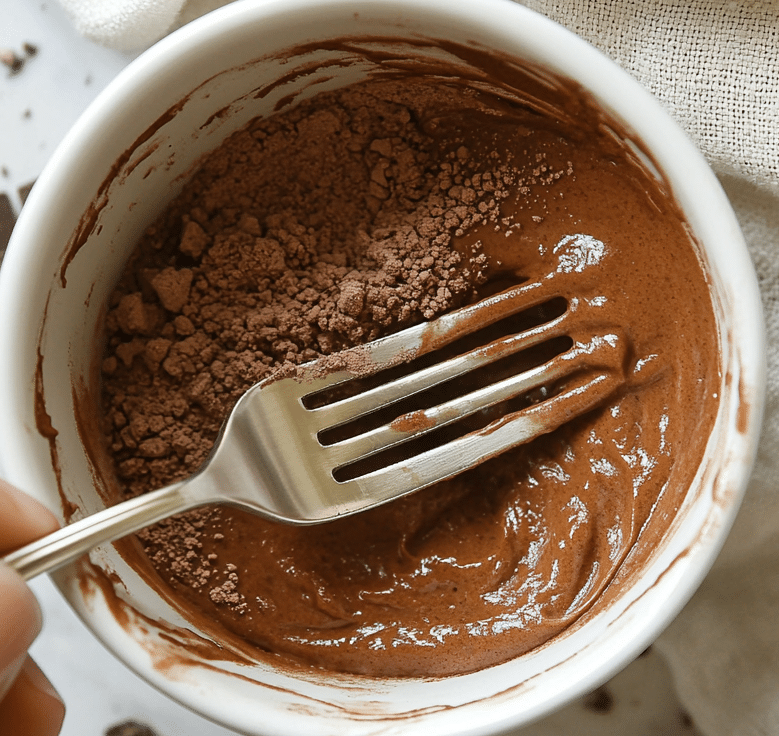
Mixing & microwave timing tips
Start by grabbing a microwave-safe mug and adding your dry ingredients—1 scoop of protein powder, 1–2 tbsp flour, ½ tsp baking powder, and any optional cocoa powder or sweetener. Mix well with a fork. Add your wet ingredients—1 egg (or flax-egg), 2–3 tbsp milk of choice, and 1 tsp oil or Greek yogurt for moisture.
Stir until smooth. Microwave on high for 60–90 seconds. Start with 60 seconds, then check the center. If it looks undercooked, microwave in 10-second intervals. My microwave mug cake usually finishes in 75 seconds—check yours and adjust as needed.
Troubleshooting: texture, timing, rubberiness
If your mug cake is rubbery or dry, it’s usually overcooked or too much protein powder was used. Add a spoonful of Greek yogurt or mashed banana for extra moisture next time. If it’s undercooked, increase microwave time by 10–15 seconds.
Consistency also varies by protein type: whey tends to dry out quicker than casein. Try splitting your batter between two mugs for faster, more even cooking.
Variations & Dietary Swaps
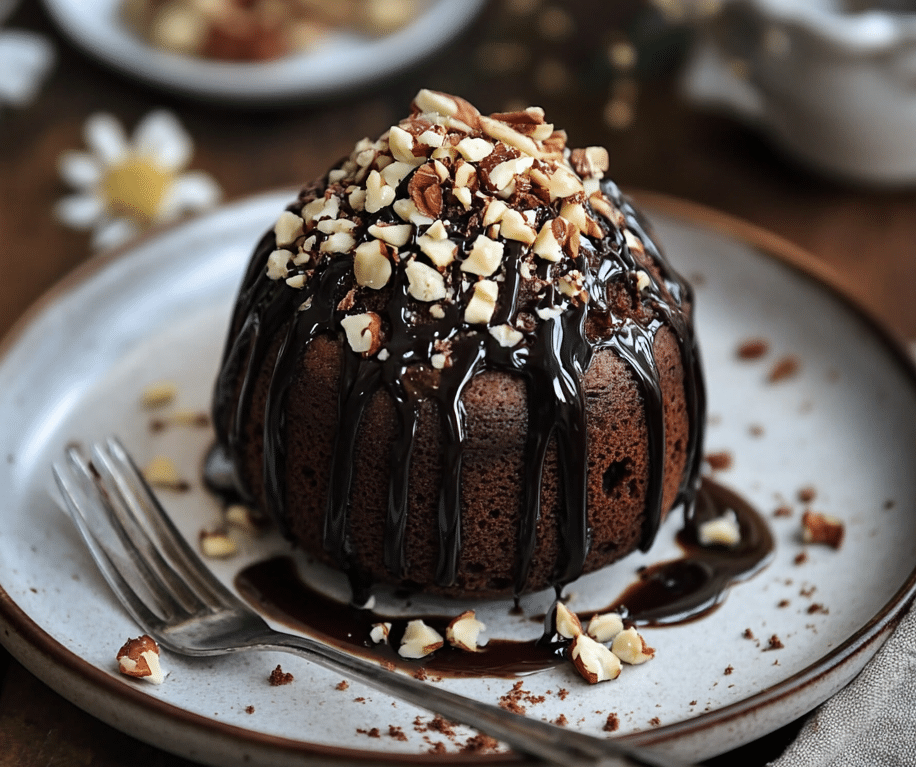
Vegan, gluten-free, and milk-free versions
Making your protein mug cake suit your diet is simple. For a vegan version, use a flax-egg or applesauce instead of an egg. Choose plant-based protein like pea or soy, and swap dairy milk for almond, oat, or soy milk. Gluten-free? Use oat flour or almond flour instead of wheat flour.
Flavor ideas: chocolate, vanilla, cinnamon, chocolate chip
The fun of a protein mug cake is how customizable it is. Add cocoa and dark chocolate chips for a brownie feel. Mix in cinnamon and chopped apple for a fall twist. Or go classic with vanilla extract and berries. I even make a peanut butter banana version after workouts.
for more recipes follow our facebook page
Conclusion
Looking back, the protein mug cake has become much more than a quick dessert in my kitchen—it’s a reminder that nutritious food can be easy, comforting, and full of personality. From experimenting in culinary school to relying on these quick fixes between restaurant shifts, I’ve found that this little cake offers a powerful way to nourish both body and spirit.
Whether you’re craving something sweet after a workout or need a fast solution for a healthy snack, the protein mug cake has your back. It’s endlessly adaptable, surprisingly delicious, and comes together in under two minutes. Try a flavor that speaks to your mood, make it your own, and most importantly, enjoy every bite.
What ingredients do I need to make a protein mug cake?
A typical protein mug cake requires a few core ingredients that you likely already have in your pantry. Start with one scoop of protein powder—whey, casein, or a plant-based option like pea protein. You’ll also need a binder like an egg or a vegan alternative such as a flax-egg. Baking powder is crucial for giving the cake lift and lightness. A splash of milk (dairy or non-dairy) adds moisture, while optional ingredients like cocoa powder, sweeteners (such as maple syrup or honey), and mix-ins (like chocolate chips or berries) enhance the flavor and texture. You can also add a tablespoon of flour, such as oat or coconut flour, for a sturdier, more cake-like result.
How long do you microwave a protein mug cake?
Most protein mug cakes cook fully in the microwave in about 60 to 90 seconds. Microwaves vary, so start with 60 seconds on high power. Check the center—it should be firm but not dry. If it looks undercooked, continue cooking in 10- to 15-second intervals. Avoid overcooking, as that can lead to a rubbery texture. The key is to strike the right balance between fully cooked and moist. If your cake comes out too dry, try reducing the cooking time slightly next time or add a bit more liquid to your batter before microwaving.
Can I make a protein mug cake without egg or dairy?
Absolutely. Many people follow plant-based or allergen-free diets, and a protein mug cake can easily be adjusted. Replace the egg with a flax-egg by mixing one tablespoon of ground flaxseed with three tablespoons of water and letting it sit for a few minutes. Instead of dairy milk, use almond, oat, or soy milk. You can also substitute Greek yogurt with a dairy-free yogurt or applesauce for added moisture. Just be sure your protein powder is also dairy-free if that’s your goal. Plant-based protein powders work well, though they may yield a slightly denser texture.
How much protein is in a protein mug cake?
The protein content in a mug cake depends primarily on the type and amount of protein powder used. One scoop of protein powder generally contains between 20 and 25 grams of protein. Add to that any egg or dairy you use—an egg contains about 6 grams of protein, and Greek yogurt can contribute another 5 to 10 grams. Most standard protein mug cakes deliver 20 to 30 grams of protein per serving, making them a satisfying and efficient way to fuel your body, especially after workouts or as a healthy snack.

